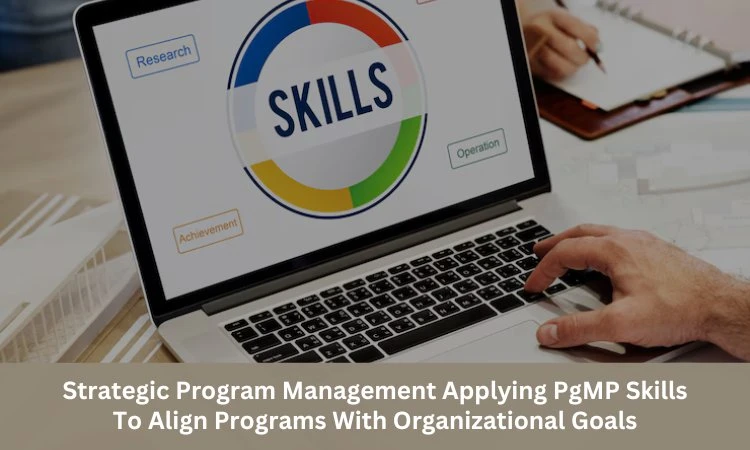Understanding Strategic Program Management
Strategic program management involves the coordination of multiple projects to achieve broader organizational objectives. Unlike project management, which focuses on individual project deliverables, program management addresses the alignment of multiple projects to ensure they collectively contribute to strategic goals. The PgMP certification, offered by the Project Management Institute (PMI), equips professionals with the skills needed to manage programs effectively, balancing the demands of individual projects with the strategic vision of the organization.
Key PgMP Skills for Strategic Alignment
1.Defining and Communicating Strategic Objectives
One of the fundamental PgMP skills is the ability to define and communicate strategic objectives clearly. Successful program managers need to ensure that every project within a program is aligned with the organization’s strategic goals. This involves working closely with senior leadership to understand the organization’s vision, mission, and strategic priorities. By establishing a clear linkage between projects and strategic objectives, program managers can ensure that each initiative contributes to the broader goals.
Effective communication is essential here. Program managers must articulate how each project aligns with strategic goals to stakeholders, ensuring everyone understands the broader impact of their work. This alignment facilitates the acquisition of support and buy-in from stakeholders for program efforts.
2.Balancing Project Benefits and Organizational Value
PgMP professionals excel at balancing the benefits of individual projects with the overall value delivered to the organization. This involves not only managing the outcomes of projects but also evaluating how these outcomes contribute to strategic objectives.
Program managers use various tools and techniques to measure the value of project outputs and ensure they align with strategic goals. This might include developing benefit realization plans, conducting performance assessments, and analyzing return on investment (ROI). By focusing on the collective value delivered by the program, PgMP-certified professionals help organizations achieve greater strategic impact.
3.Managing Dependencies and Interdependencies
Programs often involve managing complex interdependencies between projects. PgMP professionals are adept at identifying and managing these dependencies to ensure seamless coordination and alignment with organizational goals.
For instance, a program might include several interrelated projects that need to be synchronized to avoid conflicts and maximize efficiency. PgMP professionals use dependency management techniques to track and resolve issues, ensuring that projects contribute effectively to the program’s strategic objectives.
4.Implementing Governance Frameworks
Governance frameworks play a critical role in aligning programs with organizational goals. PgMP professionals are skilled in establishing governance structures that provide oversight and ensure that programs are executed in line with strategic priorities.
This involves setting up steering committees, defining roles and responsibilities, and establishing decision-making processes. Effective governance helps in maintaining alignment, managing risks, and ensuring that program outcomes meet organizational expectations.
5.Adaptability and Change Management
In an ever-changing corporate environment, flexibility is crucial. PgMP professionals are equipped to manage change effectively, ensuring that programs remain aligned with evolving organizational goals.
This involves applying change management practices to address shifts in strategic priorities, adjusting program plans, and communicating changes to stakeholders. By being flexible and responsive to change, PgMP professionals help organizations navigate uncertainties and maintain alignment with their strategic vision.
6.Measuring and Reporting Program Performance
Regular measurement and reporting of program performance are essential for maintaining alignment with organizational goals. PgMP professionals use performance metrics and reporting tools to track progress, assess outcomes, and provide insights into how well the program is achieving its strategic objectives.
Program managers may pinpoint opportunities for development, make wise choices, and illustrate the value provided to stakeholders by examining performance statistics. Accountability is increased and strategic alignment is supported through transparent reporting.
For organizations seeking to achieve their strategic goals through effective program management, investing in PgMP-certified professionals can provide a significant advantage. With a focus on aligning programs with organizational objectives, PgMP professionals play a vital role in steering organizations toward sustained success and competitive advantage.

